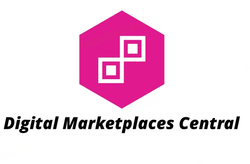Step into the future of B2B product demonstrations with a groundbreaking technology that is reshaping the way businesses showcase their offerings. Imagine being able to transport your potential clients to a virtual world where they can interact with your products in real-time, no matter where they are located. Virtual Reality (VR) is revolutionizing the traditional methods of showcasing products by providing a more immersive and engaging experience. Let’s dive deeper into how VR is transforming B2B product demonstrations and driving business success.
Limitations and Challenges of Traditional Methods
Traditional methods of conducting B2B product demonstrations have their fair share of limitations and challenges. One major challenge is the inability to provide an immersive and engaging experience for potential clients. Static presentations or physical samples may not effectively showcase the full capabilities and features of a complex product.
Traditional demonstrations often require logistical arrangements such as setting up physical spaces for showcasing products, which can be time-consuming and costly. This limitation restricts the frequency at which companies can conduct demos and reach out to a wider audience.
Another challenge is that traditional methods lack flexibility in customization according to individual client needs. Presenters may find it challenging to tailor the demonstration to address specific concerns or interests raised by each prospect in real-time.
Traditional methods may struggle with demonstrating intangible products or services that are difficult to visualize through conventional means alone. This limitation hinders effective communication of value propositions to potential clients who rely heavily on visual aids during decision-making processes.
The Rise of Virtual Reality in The Business World
Virtual reality (VR) has taken the business world by storm, offering a new way for companies to showcase their products and services. With VR technology, businesses can create immersive and interactive experiences that engage potential clients in ways traditional methods never could.
By putting on a VR headset, users are transported into a virtual environment where they can explore products in detail and even interact with them as if they were physically present. This level of engagement not only captivates audiences but also helps them better understand the features and benefits of what’s being demonstrated.
The rise of VR in B2B product demonstrations is revolutionizing how companies connect with their clients, making the sales process more dynamic and impactful. As more businesses embrace this cutting-edge technology, we can expect to see even greater innovation in how products are showcased and sold.
Benefits of Using VR for B2B Product Demonstrations
Immersive experiences: Virtual Reality (VR) offers a level of immersion that traditional methods simply cannot match. By allowing potential clients to interact with products in a virtual environment, businesses can provide a more engaging and memorable demonstration.
Cost-effective: VR eliminates the need for physical prototypes and multiple iterations, saving both time and money in the long run. This can be especially beneficial for companies with complex or large-scale products that are costly to transport for demonstrations.
Global reach: With VR technology, B2B product demonstrations can be conducted remotely, breaking down geographical barriers. This opens up opportunities to showcase products to clients worldwide without the need for travel expenses.
Enhanced customization: VR allows for real-time customization during demonstrations, providing clients with personalized experiences based on their specific needs and preferences. This level of flexibility can help businesses tailor their pitch effectively.
Increased sales conversions: Studies have shown that incorporating VR into B2B product demonstrations leads to higher engagement levels and increased conversion rates. By offering an interactive and impactful experience, companies can drive more interest and ultimately boost sales numbers.
Real-life Examples of Successful Implementation
Leading manufacturing company using virtual reality to showcase their complex machinery to potential clients. With VR headsets on, customers can now explore every detail of the equipment in a virtual environment, enhancing their understanding and appreciation.
In another scenario, a software development firm hosts interactive VR demos for businesses interested in their products. Clients are immersed in a simulated workspace, allowing them to experience firsthand how the software can streamline operations and boost efficiency.
Even healthcare companies are leveraging VR technology for product demonstrations. Imagine medical professionals being able to virtually navigate through intricate medical devices or surgical procedures before making purchasing decisions.
These real-life examples demonstrate the versatility and effectiveness of using virtual reality in B2B product demonstrations. Companies across various industries are embracing this innovative tool to engage customers on a whole new level.
Conclusion
As businesses continue to seek innovative ways to showcase their products and services, virtual reality has emerged as a game-changer in the B2B world. By revolutionizing traditional product demonstrations, VR offers unparalleled immersive experiences that drive engagement and leave a lasting impression on potential clients.
Embracing VR for B2B product demonstrations not only overcomes the limitations of conventional methods but also opens up new possibilities for showcasing complex solutions in a dynamic and interactive way. Companies that leverage this technology stand to gain a competitive edge by offering an unforgettable experience that sets them apart from competitors.
With real-life examples demonstrating the success of integrating VR into B2B product demonstrations, it is clear that this technology is here to stay. As more businesses recognize the value of using virtual reality in showcasing their offerings, we can expect to see even greater advancements and innovations in how products are presented and experienced.
In today’s fast-paced digital landscape, embracing virtual reality for B2B product demonstrations is not just a trend but a strategic imperative for companies looking to make a memorable impact on their target audience. The future of product showcasing is undoubtedly being reshaped by the transformative power of VR technology. So why wait? Dive into the world of virtual reality and elevate your B2B product demonstrations to new heights!



